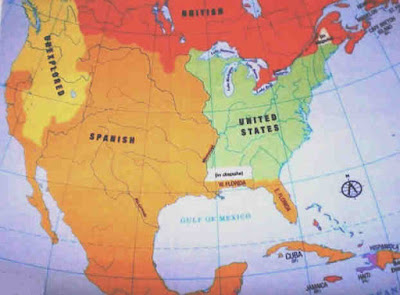 |
| Territory established at the end of the Revolutionary War |
 |
| Rival claims by US States |
Not so well remembered is that the existing states had competing claims for the western lands. But, as the neighboring map shows, the borders in the western territories were often unclear, with rival states laying claim to the same land. It also shows that some states (mostly the mid-Atlantic states) did not have claims to western land and (unsurprisingly) resented the states that did.
The uncertain borders were a fruitful field for disputes. It was not that anyone feared rival states going to war over disputed land. The Articles of Confederation had procedures for resolving such disputes. But different states could very well sell the same land to different people, leading to conflict between rival claimants that could not possibly be resolved without injustice to one or more parties. Massachusetts and Connecticut claimed land that was non-contiguous with the states and could hardly be viable. Virginia, by contrast, claimed land as far north and the Great Lakes. Technically, this land would be contiguous with Virginia, but its immense size naturally made the other states resentful. Furthermore, the sale of western land was a major source of revenue. States without this resource resented states with it, and everyone resented Virginia.
It was Thomas Jefferson who came up with the way out of this dilemma. Virginia would cede its disputed land to the federal government (then established under the Articles of Confederation), in exchange for an agreement to admit the ceded lands as states on an equal basis with existing ones. Pause for moment to consider the extraordinary statesmanship of such a proposal. How oven has any government agreed to part with such an immense territorial claim? Scarcely less remarkable is the willingness of existing states to see their power diluted by adding new ones. But it was this agreement that made possible the extraordinary achievement of the Constitutional Convention, the establishment of popular government over an unprecedented territory, and the creation of an extensive country with no "metropolis" and no "periphery," no part dominating another, but all participating as equal states.
The process began with the Land Ordinance of 1784. I will proceed with it over my next few posts.
No comments:
Post a Comment